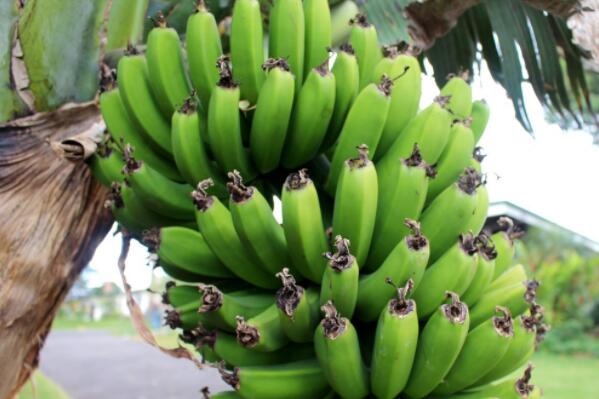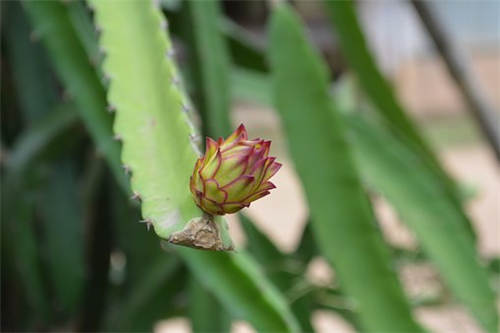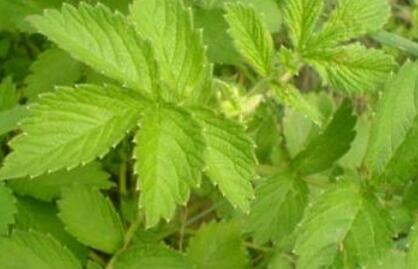How much is the price of the "herb" banana sapling? How to cultivate and plant? How long will you live? Can tie the knot in a year
The banana tree is native to the tropical and subtropical regions of southeastern Asia. It is not a tree, but a giant herb with soft stems made up of rolled-up petioles. How much is the price of its seedlings? How to cultivate and plant? How long will you live? How many times a year can you bear fruit? Learned from the Yunnan banana planting base, banana seedlings are divided into test-tube plantlets, and bud-sucking plantlets, two kinds, about 2 yuan per plant.

How to cultivate and plant banana saplings?
Nurture:
Bananas are propagated mainly by sucking buds or underground stems.
1. Sucking buds for propagation
The sucking buds of bananas can be divided into sword buds (sword leaf sucking buds) and large leaf buds (big leaf buds) according to their characters and sources. Sword sprouts can be selected as mother plants or seedlings. Sword sprouts can be divided into red bamboo shoots and sprouts according to their different stages, which are described as follows:
(1) Red bamboo shoots
The base of red bamboo shoots is stout, the upper part is sharp and thin, and the leaves are small, which is named because of its tender red color. The whole bud is shaped like a bamboo shoot (at the beginning). It is a bud that grows on the ground only after the temperature warms up in February and can be used as a mother plant of the next generation. If you need to transplant for seedlings, generally need to be above the height of the seedling 40cm. After planting, the leaves come out first and the roots grow later.
(2) Shoots of jackets
The leaf blade is narrow and as small as a sword. It got its name because its leaves were pulled out last year, overwintered and withered, but it was still hung on the pseudostem. In the later stage of jacket bud growth, due to the low temperature, the aboveground part grew slowly, the nutrient accumulation in the underground part was more, the shape of the lower part was big, the upper part was small, and the root system was more. Guangxi is used to keeping winter sprouts for planting seedlings in the new garden. After planting, this kind of seedling first grows roots, then leaves, grows fast, and bears early and stable results.
(3) large leaf buds
The big leaf bud refers to the sucking bud that grows in the bud eye close to the ground, or the bud on the weak growth mother plant, or the bud germinated from the head of the old banana. The bud is slender, the underground corm is also small, the leaves are large at the beginning, and the leaves are round and broad, so they are named big leaf buds, which are not selected as the mother plant to continue to bear fruit, and are rarely used as seedlings. if used as seedlings, the fruit is late and the fruit clump is small. When the sucking bud is dug up, in order to avoid damaging the mother plant and the sucking underground stem, the experienced fruit growers first dig the soil outside the sucking bud into a sunken semicircle, then use the foot close to the side of the mother plant and push it toward the depression, and the sucking bud can be separated from the head of the mother plant, such as cutting off the suction bud at the junction of the suction bud and the mother plant with the help of a sharp knife. Damage the underground stem of the mother plant as little as possible, and then pull up the sucking bud, which can be planted.
Second, underground stem cut into pieces and propagated.
In order to cultivate a large number of shoots in a short period of time, the underground stem can be propagated by cutting into pieces. The method is as follows: after the underground stem is dug out, the central main bud is removed, and then cut into small pieces, each piece must weigh at least 120g, the large underground stem can be cut into 8 pieces, and the small one is cut into 2 pieces. Each piece leaves a thick bud hole, and the incision is coated with plant ash for anticorrosion. According to the experiment conducted by the Institute of Agricultural Sciences in Longxi, Fujian Province, the underground stem of the plant without flowering and fruiting has only 15% germination rate, and the growth and yield of the cultivated bud are not worse than those of the sword leaf bud. The best slicing time is from November to January of the following year, most of them can germinate, and the seedling height 40-50cm can be transplanted from May to June, and blossom and bear fruit at the same time as sucking bud planting. When raising seedlings, you can 15cm according to the row spacing of the plant, put the cut pieces evenly on the border, bud up, and then cover the soil and grass. After the buds were unearthed, dilute urine was applied, and then fertilizer was applied once every half a month for 5 times. After 8 months' management, the seedlings were more than 1.2m high and could be dug up and planted.
Planting:
1. Seed and seedling selection
Select the seedlings with thick green leaves, well-developed roots, 15 murmurs 20 cm high, 6 new leaves with 5 murmurs and no diseases and insect pests.
2. Planting time
Spring planting, mid-February, late February, autumn planting, September can be two periods.
3. Planting method
Banana seedlings can be graded according to size and planted in different areas. When planting, open a small hole in the center of the planting pit, put the seedling gently in the pit, the depth is about 10 cm with the banana head buried in the soil, the incision of the seedling faces to one side, step on it slightly after planting, drench enough planting water, cover the straw.
Administration and Management
1. Fertilization: in the first time, 5 kg of pig manure and 0.2 kg of phosphate fertilizer were applied to each plant from April to April, and then covered with thin soil. In the second time, 50 kg of soil and miscellaneous fertilizer, 0.2 kg of peanut bran and 0.1 kg of compound fertilizer were applied on the banana border in the second time, and 25 kg of soil fertilizer, 5 kg of farm fertilizer and 0.2 kg of bran fertilizer were applied per plant in the first and middle of August.
In addition, rotten manure water was applied every 10 days in the leaflet stage, and the peanut bran water made by retting was applied every 10 days in the big leaf stage, or urea 1 and potassium fertilizer 0.5 or compound fertilizer 2 was added to water.
Extra-root topdressing: banana leaflet stage, before and after budding, fruit stage with 120 times banana fast-growing agent, Nongzhibao, spray Shibao, 0.3% potassium dihydrogen phosphate spray.
2. Irrigation and drainage, weeding
Banana fields should have high border and deep ditches to facilitate drainage and lower the groundwater level, as well as irrigation. During the period of exuberant growth, it is necessary to keep the shallow water layer of the border ditch so that it can be watered early and late in the dry season and cover the banana bed well. Banana is a shallow root plant, which is removed by hand when weeding, and it is taboo to step on the border or hoe the root group.
3. Leave buds and remove buds
Banana trees cut off the first way to suck buds, wait for the second or third way to suck buds, make sure to retain the suitable 1Mui 2 sucking buds, and remove all the other sucking buds.
4. Broken buds
After the banana buds, pay attention to the field inspection. When the top of the banana axis 1 / Murray 2 comb is not strong, the buds will be cut off in the sunny afternoon to reduce the sap loss. When the sap of the wound stops, the wound will be brushed with 500 times carbendazim and other fungicides.
Prevention and cure
1. Leaf spot disease, which harms banana leaves. In April every year, it is sprayed with 25% enemy emulsified oil 1500 Mel 3000 times, once every two months. Or use 600m / m / 800x topiramate or Dyson zinc spray leaf.
2. Mosaic heart rot and bunchy top disease: the first method is not to introduce and purchase seedlings in the disease area, the second is to dig up the diseased plants immediately, and the third is to spray aphids with dimethoate 1000mi 1500 times to reduce transmission.
3. The control methods of butterflies, locusts, leaf rollers, weevil and other pests are as follows: ① strips off the rotten leaf sheath on the periphery of the pseudo-stem and removes the leaf bud in time. ② was drenched in the petiole fork with 800x of trichlorfon and 400x of dipterex. ③ was sprayed with 1000 times dimethoate.
How long can a banana tree live? How many times a year can you bear fruit?
Natural banana trees can live for about 30 years! But the owner of the banana plantation said that adult banana trees only have a "life span" of one year, and they have to be changed every year. These small banana seedlings are the seedlings of the second year, and all the banana trees will be cut down completely in the third year, and then the small banana seedlings will be caused from the banana seedling base.
Time: 2019-04-10 Click:
- Prev

How many times a year does the dragon fruit bloom? How many times do you bear fruit? How much fruit can a tree bear? How do you plant it?
The dragon fruit, also known as the red dragon fruit, is a relatively common fruit on the market. It is very popular because of its anti-aging and antioxidant effects. Now most families also like to grow it at home. How many times a year do the dragon fruit trees bloom? How many times do you bear fruit? How much fruit can a tree bear? How to plant
- Next

Can Rosaceae plant "fairy crane grass" lower blood sugar? How much is the seed price per jin? When will it be planted? Cultivation
Ampelopsis grossedentata generally refers to Longya grass, which is a perennial herb of Rosaceae and Agropyron, distributed in China, Europe, Russia, Mongolia, Korea, Japan and Vietnam. Often born by streams, roadsides, grasslands, thickets, forest margins and under sparse forests, 100-3800 meters above sea level. that
Related
- Fuxing push coffee new agricultural production and marketing class: lack of small-scale processing plants
- Jujube rice field leisure farm deep ploughing Yilan for five years to create a space for organic food and play
- Nongyu Farm-A trial of organic papaya for brave women with advanced technology
- Four points for attention in the prevention and control of diseases and insect pests of edible fungi
- How to add nutrient solution to Edible Fungi
- Is there any good way to control edible fungus mites?
- Open Inoculation Technology of Edible Fungi
- Is there any clever way to use fertilizer for edible fungus in winter?
- What agents are used to kill the pathogens of edible fungi in the mushroom shed?
- Rapid drying of Edible Fungi

